As a beginner woodworker, it’s always exciting when you acquire new tools, especially power tools like miter saws. It’s just like unboxing a new toy or a present. The thrill comes mostly from imagining all the projects or tasks you can do with the tool, and how it’s going to make the projects easier and faster.
Along with the thrill, is also some sense of curiosity, imagining all the the kind of tasks you can possibly carry out with the tool, and just how far you can push it.
A miter saw is one of such exciting new tools. It’s is specifically designed for making crosscuts through materials. As long as it is within the capacity of the saw, it can cut right through the material.
However, not every material can be cut with a miter saw. As a beginner woodworker, you might be wondering what you can cut with your newly purchased miter saw and what you should not cut with it.
If you’ve ever thought about that, then you’re in the right place. Here in this article, I have listed and explained all the types of materials you can cut with your miter saw, and materials you should not cut with it, so that you can use it safely and get the best out of it.
Table of Contents
What You Can Cut With Your Miter Saw
Here are a list of materials you can cut with it.
Wood

It’s no surprise, wood takes the first spot. Although miter saws can be used to cut other types of materials, they’re primarily designed for cutting wood. That’s why they’re common power tools you’ll find in any woodworking shop.
You can cut any type of wood with it, as long as you’re making crosscuts and the size of the wood is within the capacity of the saw.
Engineered Lumber
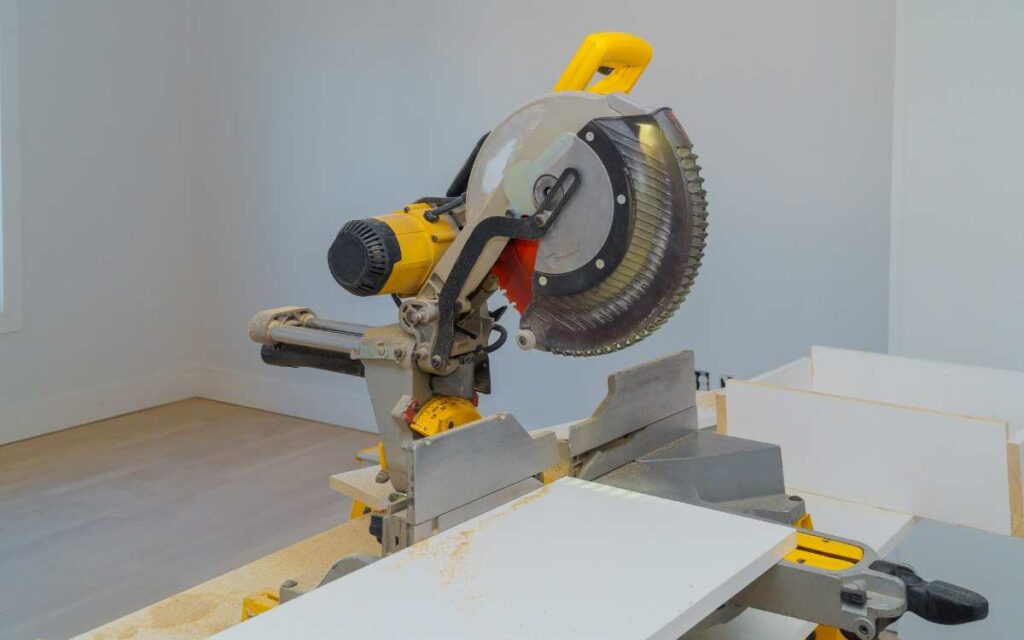
Most engineered lumber like plywood, MDF, HDF, OSB, Glulam and more come in sheets and thus are mostly ripped using a table saw or a track saw.
Once they’re ripped down to thinner or smaller sizes you can cut crosscut them with a miter saw if you want to.
It’s important to note however that engineered wood or lumber is made up of different materials apart from wood, such as resin, glue and even plastic. As such, it’s important to use the right type of blade depending on the type of engineered wood you’re trying to cut.
When making the crosscut, I recommend using an ATB (Altanate Top Bevel) blade with a high tooth count between (80-100) and a thin kerf.
This ensures the blade cuts smoothly through the engineered wood, and also helps to prevent tear-outs.
Hardwood and Laminate Flooring
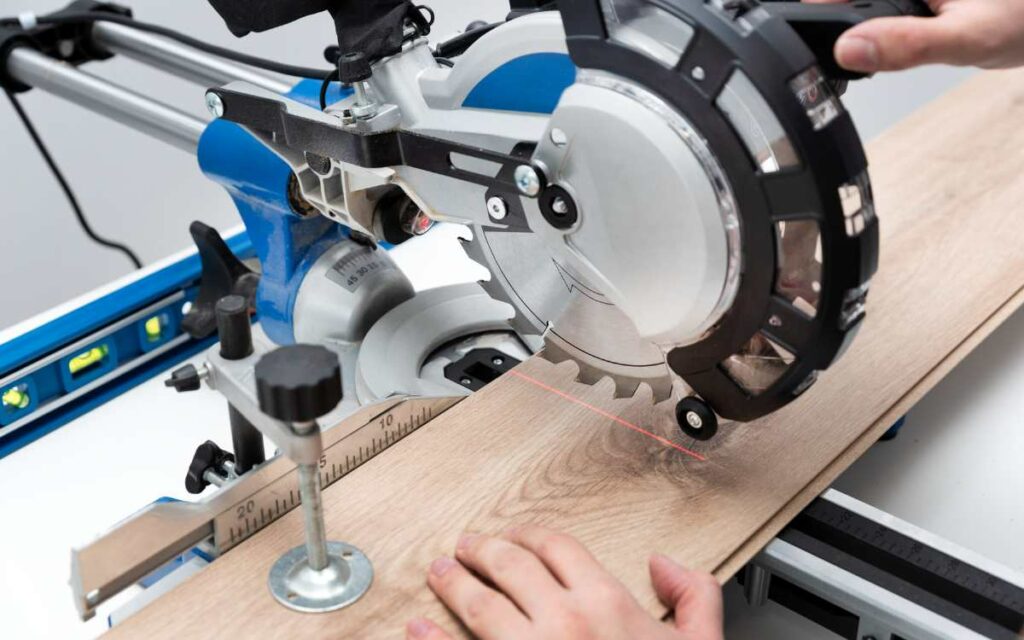
A miter saw is one of the most important tools to have if you carry out hardwood and laminate flooring projects. That’s because all the cuts you’ll make throughout the projects are mostly crosscuts and bevel cuts.
When carrying out a laminate flooring project, you need a tool that offers you precision, versatility and speed to produce the best results. If the cuts are not precise and clean, it will be visible in the final appearance, which is not something you or your client wants.
Although other tools like a radial arm saw can offer you that precision of a good miter saw when carrying out hardwood and laminate flooring projects, they cannot beat the speed and portability of a miter saw.
Radial arm saws and table saws are not as portable as a miter saw and thus are usually not job site friendly for projects like this. Circular saws are portable, but will not offer you the precision you need when carrying out these kinds of projects.
Non-Ferrous Metals
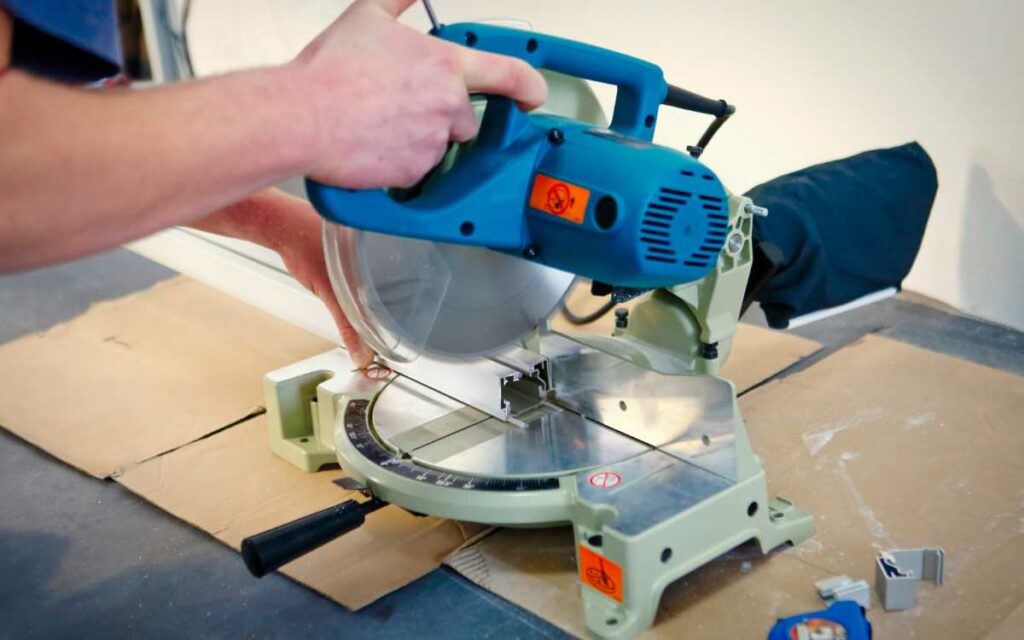
Non-ferrous metals like aluminum, copper, zinc, and brass can be cut easily with a miter saw. Just remember to switch out the wood cutting blade already on it with a standard 100 tooth carbide tip TCG blade designed for cutting non-ferrous metals.
Using a wood cutting blade for non-ferrous metals is quite risky and have several disadvantages. First, the cut quality will be poor, with rough and uneven edges on the metal.
Secondly, the blade will easily get damaged, because non-ferrous metals like aluminum, copper and zinc are generally harder than wood. The teeth on the wood cutting blade are not designed to handle the harder, denser materials of non-ferrous metals. As a result, they’ll get dull quickly, chip or even break off.
A carbide tip TCG blade on the other hand is designed for cutting hard and dense materials like aluminum and other composite materials. Unlike standard saw blades, the teeth on a TCG blade alternate between a flat top and a beveled edge.
These design protects the blade and the material, because the blade cuts through the materials clean and precise without generating lots of heat which can damage the material being cut.
The alternating flat and beveled edge of the teeth on a TCG blade also helps to prevent the material from chipping and splintering during the cut.
PVC Pipes
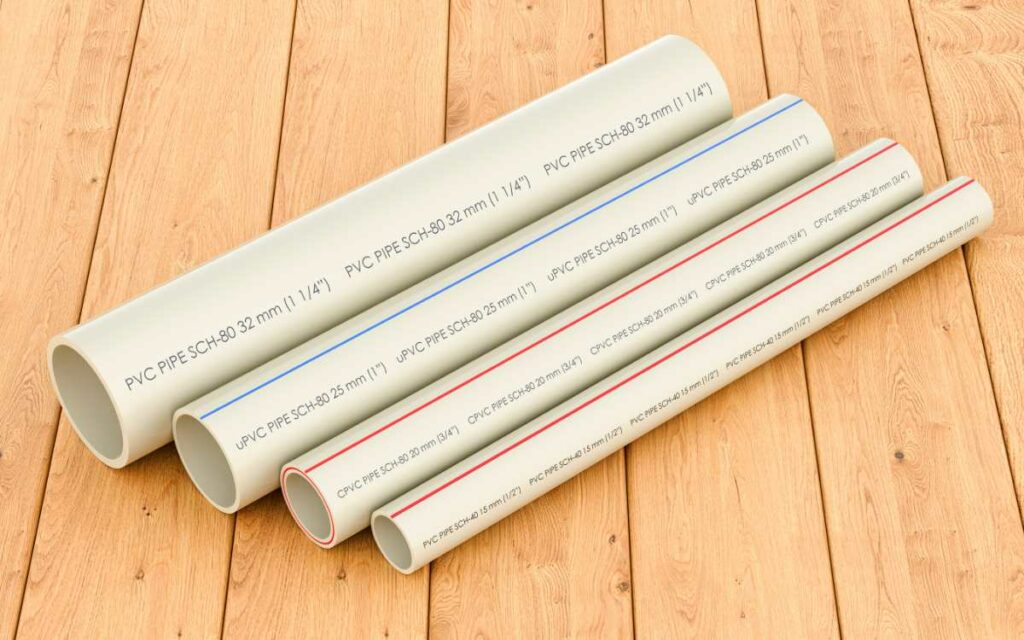
Plumbers and electricians use PVC pipes all the time for house plumbing, drainage and conduit wiring applications. There are several tools you can use to cut a PVC pipe, such as a standard handheld hacksaw, a coping saw and a reciprocating saw. However, one of the best ways to cut them is by using a miter saw. For the best cut quality, use a fine tooth blade between 100 to 200 tooth.
Using a standard handheld hacksaw or even a jigsaw can take some time, but a miter saw will make quick work of it in mere seconds.
You also get more precision cuts especially for projects where the pipes need to fit together tightly and securely.
Moldings
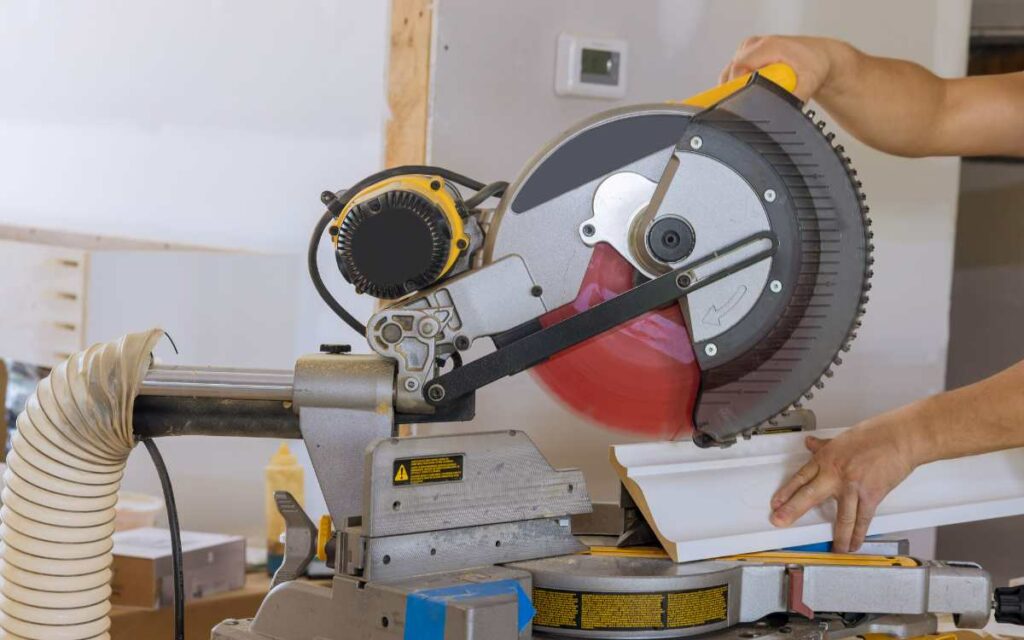
One of the most common materials miter saws are used to cut are moldings. If you professional finish carpenter, I’m sure you already know this.
Moldings only need to be cross cut during installation. In order to fit into corners along the walls, you have to cut precise angles and bevels and a miter saw is the best tool for the job, since it’s portable and can provide the degree of precision needed for these kind of installations.
What Not To Cut With A Miter Saw
Although you can use a miter saw to cut the materials mentioned above and more. There are certain materials you should never attempt to cut with it.
Glass

Miter saws are not designed to cut glass in any form. Attempting to cut glass with it can be dangerous because the glass will likely shatter or crack during the cut, which can potential cause the glass pieces flying and cause injury to the operator or anyone nearby.
There are safer and more precise means to cut glass. You can use a glass cutter, which is a small handheld tool with a sharp, carbide or diamond tip you can use to score the glass surface, exactly where you want the cut to be made. After scoring it, applying a little effort to the sides of the glass will cause it to break cleanly along the line without shattering or breaking anywhere else.
Masonry
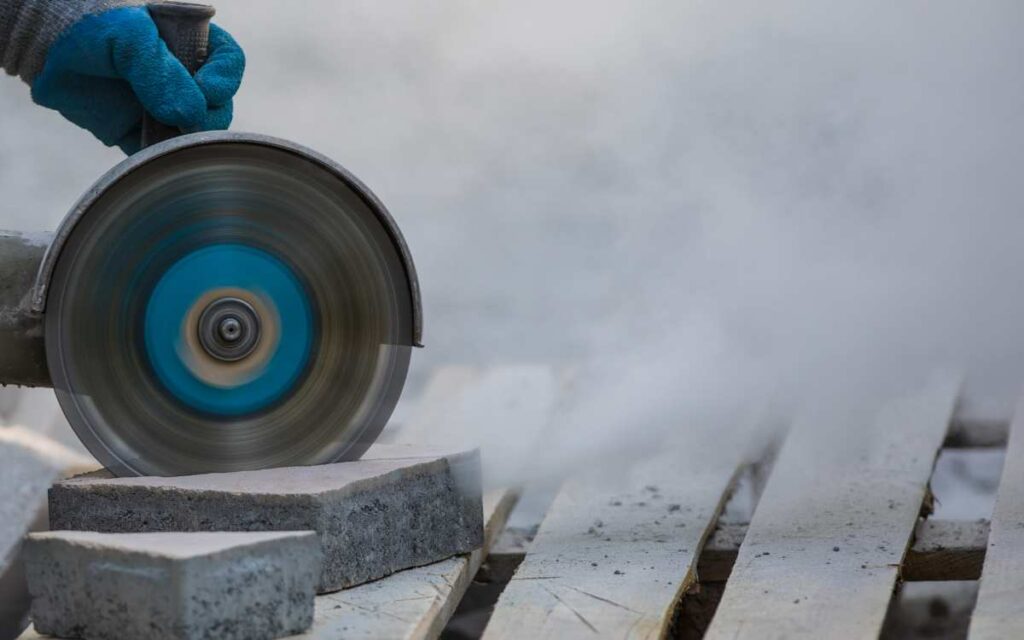
There are specialized tools for cutting masonry materials like concrete, bricks, or cement blocks. You should not use a miter saw to cut them for several reasons.
First of all, cutting masonry such as concrete and bricks produce lots of dust and debris that the saw is not designed to handle. This dust and debris can and will eventually clog the saw and damage several parts of it like the motor. So, if you don’t want to damage your miter saw, don’t use it to cut masonry.
Secondly, cutting masonry with it is not safe for you or for anyone nearby. That’s because the blade can get jammed up because of the dust and debris from the masonry material, and cause kickback during the cut, which will be dangerous to you and those nearby.
Steel

Although it’s quite possible if you use the right blade, you shouldn’t cut steel with a miter saw. Instead, you can use a chop saw. Some folks think chop saws and miter saws are the same, but they’re not.
Chop saws are specifically designed for cutting ferrous metals such as steel or iron. Miter saws on the other hand are for cutting wood and non-ferrous metals like aluminum. So, if you want to cut steel, use a chop saw.
Large Sheet Goods
Miter saws have limited cut capacities and thus are only used for making cross cuts. That’s why you should not cut large sheet goods with it.
Instead, you can rip the sheet goods down into smaller stocks with a table saw, a circular saw or a track saw. Then you can take these thinner strips to a miter saw for crosscutting.
Irregular Materials
Irregular materials like tree trunks and branches cannot be laid flat on the saw table and thus can hardly be clamped to secure them against the fence. So you should never attempt to cut them using a miter saw even if the material is wood. Instead, you can use other types of saws like a bandsaw, a reciprocating saw or even a chainsaw for these type of materials.
Small Materials
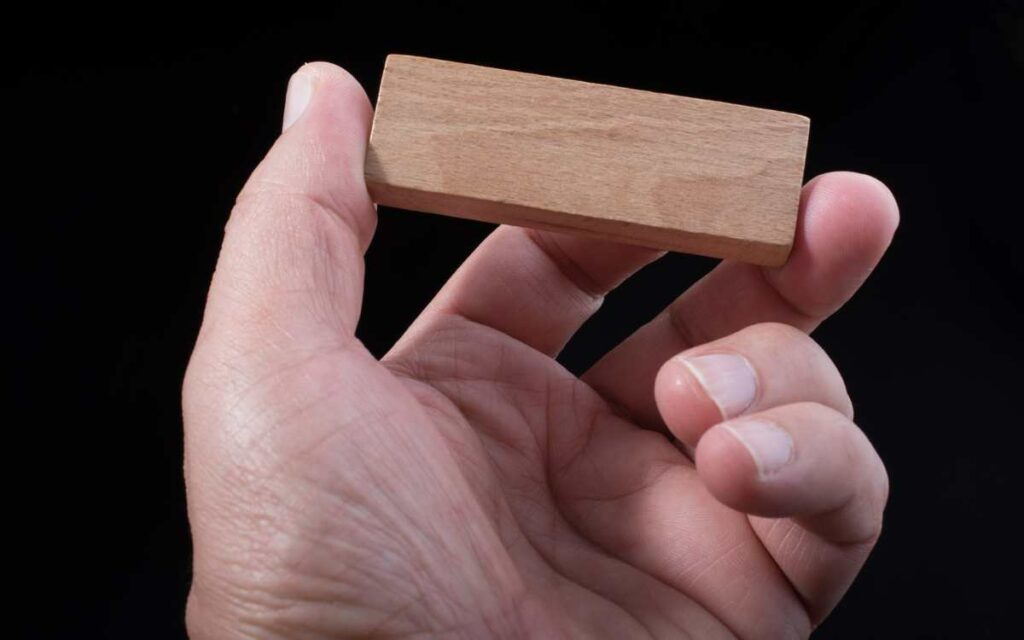
When making a cut, your hands should be as far away from the blade as possible. Small materials will require that your hand get close to the blade, which is very dangerous. So, if you want your hands in tact, never attempt to cut a very small workpiece on a miter saw.
Small materials can hardly be clamped and thus can cause kickback which will result in the material being projected at very fast speeds towards you or anyone nearby.
Conclusion
To wrap things up, having a miter saw in your tool arsenal is very important because it’s a versatile power tool you can use to cut a wide range of materials, from wood, engineered lumber, PVC, hardwood/laminate flooring, non-ferrous metals and more.
However, there are materials you should not attempt to cut with it such as glass and masonry due to safety concerns and potential damage to the tool. By having this understanding, you can make the most out of this handy tool and use it accurately and safety during your projects, whether you’re beginner woodworker or a pro.

